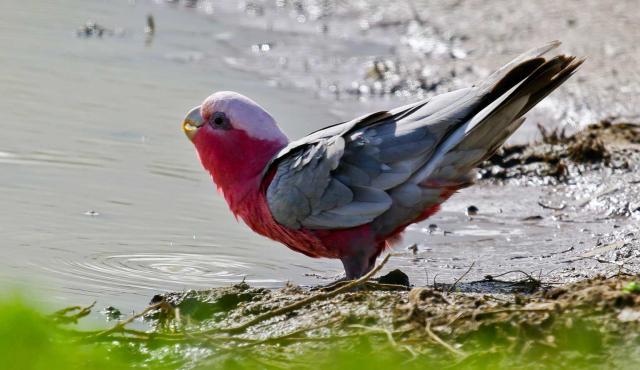
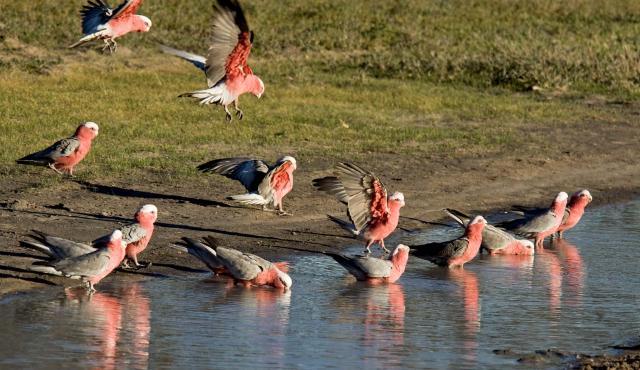
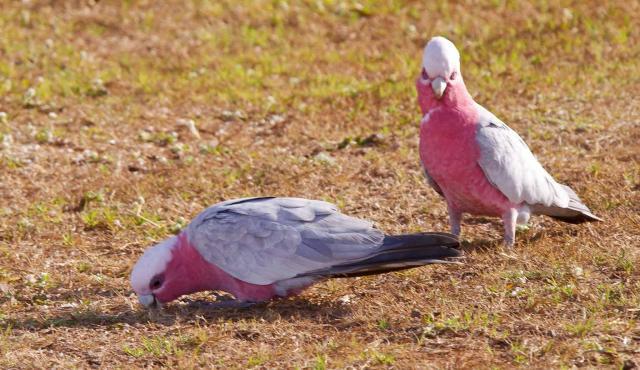
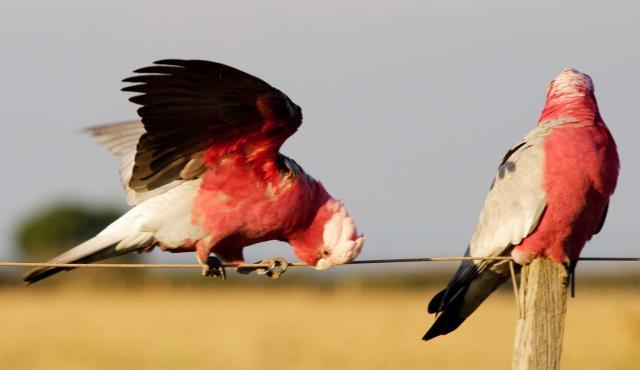
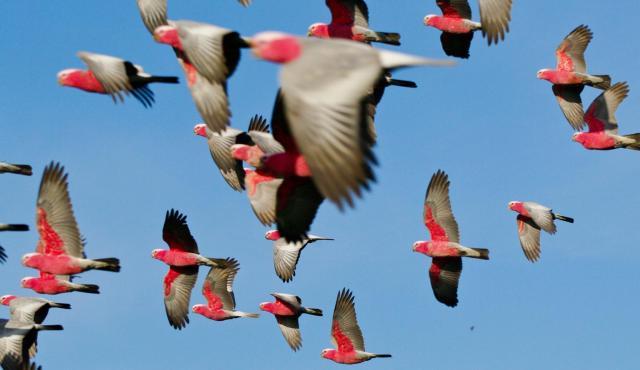
Galah
Eolophus roseicapillus
| Details | |
|---|---|
| Type | Bird |
| Group | |
| Other Common Names | Rose Cockatoo, Roseate Cockatoo, Rose-breasted Cockatoo. |
| Biology | Breeds July-December in southern Australia. Forms permanent pair bonds although will pair again if one does not survive. Nests in tree hollows or similar. Clutch size is between 3 and 6 eggs. Both sexes incubate eggs and care for young. Young fly at 6-7 weeks. Huge flocks of birds congregate and roost together at night. |
| Distinctive Markings | The male has a dark brown eye while the female has a red eye. |
| Taxonomy | |
|---|---|
| Phylum | Chordata |
| Class | Aves |
| Order | Psittaciformes |
| Family | Cacatuidae |
| Genus | Eolophus |
| Species | roseicapillus |
Self-introduced to Tasmania.
| Interesting Facts | |
|---|---|
| Diet | Herbivore. Feeds on seeds mostly from the ground including seeds from grasses and cultivated crops. |
| Habitat | Timbered habitats, usually near water. Now found in urban areas following clearance of subcoastal woodlands for farming. |
| Native Status | Native to Australia |